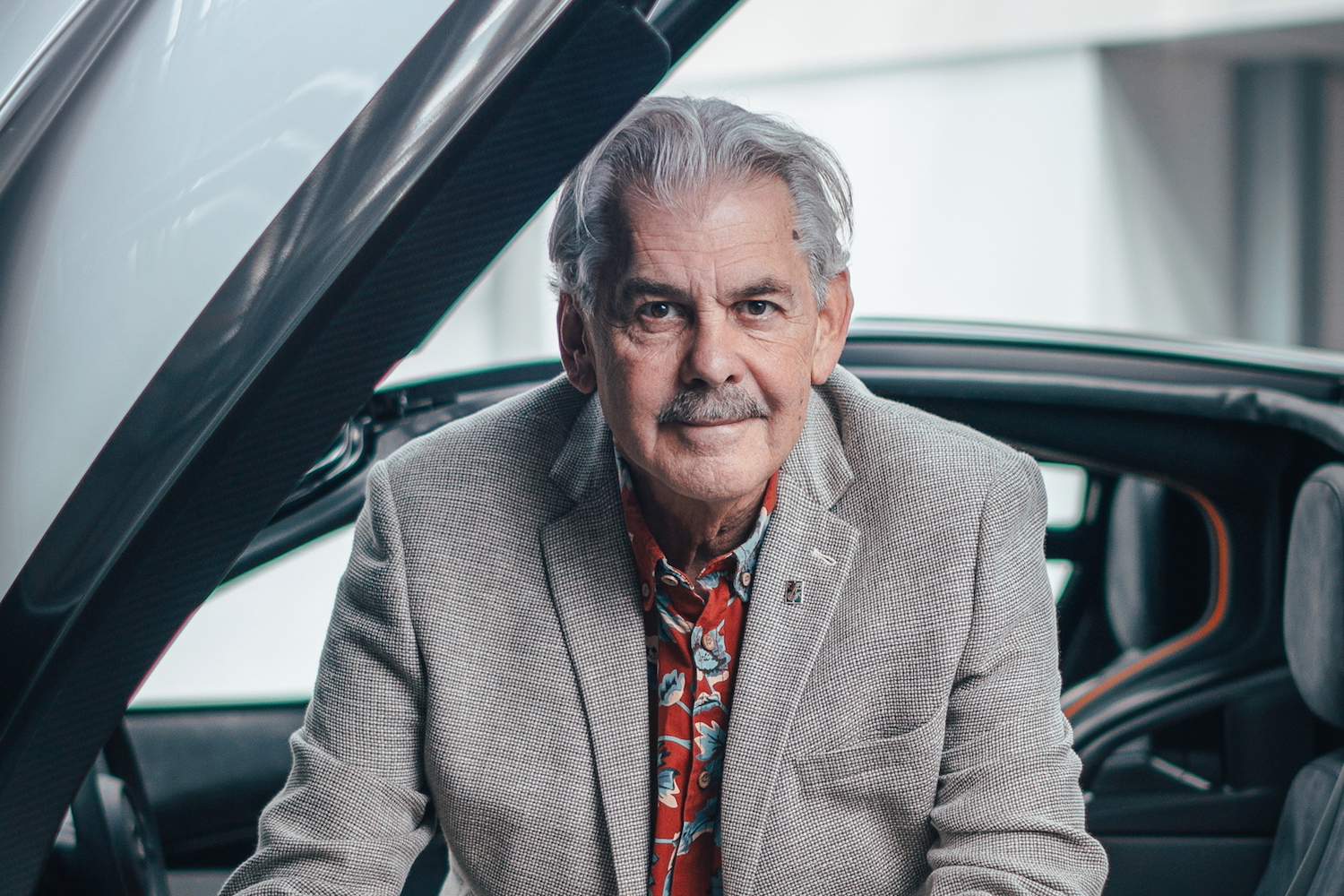Gordon Murray, an automotive designer and engineer, has been a driving factor in the advancement of both racing and road automobiles for over five decades. Murray, who was in command of a Formula 1 team at the age of 27, spent 20 years in the world’s premier race series and won five World Constructors’ Championships. And, while the legendary 1992 McLaren F1 road vehicle is widely considered his crowning achievement, the 77-year-old designer is far from finished: His most recent creation, the Gordon Murray Automotive T.50s Niki Lauda, had its North American debut at Monterey Car Week. The length and clarity of our chat with the designer have been trimmed.
When did you realize that cars were going to be your passion?
I was perhaps 5 or 6 years old. My father was a mechanic, and shortly, people began creating specials to go racing again. I’d sit on the bench and watch him put things together. We couldn’t spend a month without seeing some kind of motorsport. I can’t recall ever wanting to do anything other than race cars.
What was your greatest lesson from Formula 1?
We had a small budget with Brabham and Bernie Ecclestone compared to the big boys like McLaren, Ferrari, and even Williams. That time taught me a lot about how to build a race-winning vehicle on a shoestring budget and defeat the giants. You rapidly understand what makes a car run fast while without costing a lot of money.

Of all your race cars, which are you most proud of?
One of my favorite cars is the Brabham BT44. Of course, it was my first Grand Prix triumph, but it was also quite innovative. It was the first Grand Prix vehicle to have rising-rate pull-rod suspension, which is now standard on all racing cars throughout the world. It was the first to use a triangular form to lower the center of gravity, the first to link the rear suspension directly to the back of the engine, and the first to transport a lot of gasoline behind the driver rather than down the sides, resulting in less weight distribution shift throughout the race. It will always hold a particular place in my heart.
Many collectors point to the McLaren F1 as being the next Ferrari 250 GTO in terms of holy grail status. What are your thoughts?
It had numerous firsts, much like the BT44, and it possessed the finest V-12 constructed up to that moment. Then it went on to win Le Mans on its first attempt, which is something no car can ever take away from it. When it comes to creating an automobile, you just do your best. You don’t consider it becoming iconic. Of course, it’s always a pleasant surprise when it happens.
Describe your thought process behind the new T.50s Niki Lauda.
When I did the McLaren F1, I said to the shareholders and directors, “Please don’t talk about racing, because I’m trying to do the ultimate road car.” But then we had customers who basically forced us to go racing, and it was a compromise. This time, I decided right from day one that [the T.50] would be a clean-sheet road car and I would have a different team of people for a clean-sheet track car [the T.50s]. It’s a different starting point. It looks to be in the same family, but every single body panel is different, the monocoque is different, as is the transmission, engine tuning, driveline, and suspension. It’s basically another car, which is what I should have done with the F1.
Is there still life in the internal engine? Are there any ways left to improve it?
We just proved you can jump from 9,000 revs to 12,000 revs and still pass emissions. And there’s a long way to go still on fuels. You can run internally on hydrogen, and synthetic fuels are coming along. The advancement of electrical vehicles is going to stall a bit until we get new battery technology—we need more efficient batteries, as the energy density is really poor on the current technology. I think the internal engine is going to be around for much longer than people are predicting.

Could you get excited about developing an electric car?
Because I grew up in the ’60s, with all those beautiful and lovely-sounding motorcars, I tend to be more excited about those and less excited about electric cars. Ultimately, you will get a generation that has never driven an internal-engine car, the same way that, right now, at least in Europe, there are so many people who have never driven a rear-wheel-drive car. Personally, I still love the internal engine, but I realize we have to move on. Even at Gordon Murray Automotive, when we do have to hybridize and run electric cars, we will, but we promise everybody that they will still be the lightest, most exciting, and best-engineered.
What advice would you give a young person looking to become the next you?
We’ve become more and more pigeonholed and specialized; it’s just the way our industry has gone. Even in racing, you get somebody in a Formula 1 team who has done front suspension for 20 years and has never seen the whole car. The advice I give all the youngsters is to get your hands. If you’re going to be a designer, you have to have practical knowledge. Go and help somebody build a racing car, or restore a car. Try to see the bigger picture and don’t get too compartmentalized. I’ve been in this a long time, and the industry has been very, very good to me. My shareholding, almost in its entirety, is going into building a technical college. That’s going to be my legacy.